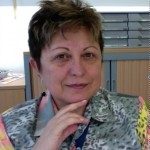Link to Pubmed [PMID] – 3099380
Scand. J. Immunol. 1986 Dec;24(6):669-79
Intraperitoneal infection of young adult C57BL/6 males with 10(5) blood or cloned culture forms of Trypanosoma cruzi (CL strain) induced the appearance in spleen, blood, and lymph nodes of cytotoxic effector cells detectable in a lectin-dependent 51Cr-release assay. The effector cells were conventional cytotoxic T lymphocytes (CTL), since they were Thy 1+ and Lyt 2+, and the lysis of tumour target cells was strictly dependent on the presence of lectin. CTL activity is already detectable in spleen 2 days after infection, reaches a peak at 2 weeks, and returns to normal levels during the chronic phase (1 month onwards). Increased levels of CTL activity were also detected in lymph nodes with similar kinetics, even in animals that were splenectomized prior to infection. In contrast to spleen, significant levels of CTL activity persisted in lymph nodes in the chronic phases. This functional variable correlates with the appearance of high numbers of large Lyt 2+ lymphocytes in the same organs (50 to 100-fold higher than in control, uninfected mice). Very similar responses are detected in a T. cruzi sensitive mouse strain (C3H/HeJ). It appears, therefore, that T. cruzi infection results in a large polyclonal activation of Lyt 2+ lymphocytes, some of which differentiate to effector, cytolytic functions.

